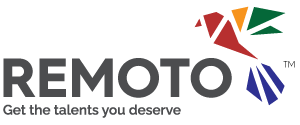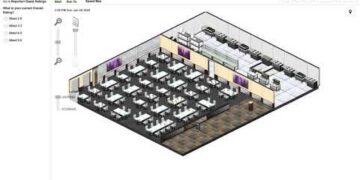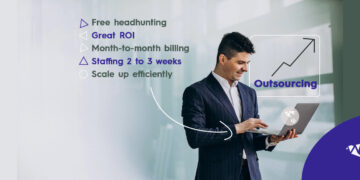Navigating a changing economy can be daunting. Staying afloat during uncertain times is challenging, but there are strategies you can use to build a resilient business that can survive difficult circumstances.
In this blog post, we’ll take a look at the current economic scene in the US. Then, we’ll explore strategies for creating a stable business environment to face unexpected economic turbulence in the US while still keeping success in mind.
Grasping the US Economic Scene
The US economy has long been characterized by its mercurial nature. On one hand, it’s fluctuating and dynamic; on the other, it’s complex and unpredictable. While some economic trends remain steadfast, others are being reshaped by authorities, businesses, customers, and employees alike.
Despite its transformative essence, experts suggest that significant improvements in the US economy are unlikely. For example, certain agencies warn that GDP may eventually stagnate.
Inflation rates and rising prices are expected to persist into the second half of 2023. Consumers, who are the backbone of the American economy, are also spending less due to economic pressures.
Interestingly, the nation’s economic performance differs sharply from its labor market. Unemployment rates remain low, and there’s a diverse labor supply across industries, such as financial services, technology, and healthcare. The labor market today is far more robust than it was centuries ago.
However, the US job market is experiencing a shift. According to the World Economic Forum, wage growth is being stifled by inflation, with a potential decrease of up to 1% by the end of 2023. Moreover, companies have begun to reduce the number of new hires and their salary offerings, resulting in a downward trend in job earnings.
In light of the ever-shifting essence of the US economy and the challenges it poses, it’s vital to build resilient US businesses supported by a future-ready workforce. Achieving this goal involves embracing strategies such as:
- Promoting flexibility in the workplace
- Bolstering core business operations
- Harnessing the power of technology and innovation
Let’s delve into these strategies and explore their potential!
Unleash Your Business Potential With a Flexible Workforce
Creating a robust company that prioritizes employees and promotes diversity requires flexibility. This quality helps business owners navigate the unpredictability of the US economy and outshine the competition.
Fortunately, there are several strategies that businesses can implement to create a more flexible workforce today. Let’s examine two of them.
Create a Workplace Flexibility Policy
Flexibility is a strategic move for companies and employees to prepare for the future of work. US business owners benefit from increased productivity and efficiency when work arrangements are flexible. Additionally, employees enjoy greater work-life balance through flexible work schedules.
Since the definition of “workplace flexibility” varies among individuals, it’s important to establish agreements. This includes gauging everyone’s understanding, expressing how it’s implemented in the company, and discerning its impact on employees’ workloads. Crafting a workplace flexibility policy is essential for this purpose.
Introducing flexible work policies has two key advantages. First, such policies ensure that all employees are aligned with clear expectations. Second, as noted by Mona Bushnell, a flexible work policy enables a business to retain top talent.
What are the essential components of a flexible workplace? Below we outline some of the key factors to consider in designing a workplace flexibility policy:
- When employees can choose when, where, and how to work.
- Whether employees can condense their work into a few days per week to have more days off.
- Whether it’s possible to share job tasks with other colleagues
- Whether it’s 100% remote work.
How to implement a workplace flexibility policy in your company? According to Bushnell, here are the steps you can follow:
- Announce to your employees that there is a flexible work policy.
- Train managers to lead the flexible workforce effectively
- Schedule weeks of flexible work to test whether this model is successful in your company
- Understand that the flexible work model doesn’t work for everyone and that you must listen to your employees’ opinions.
Elevate your understanding of workplace flexibility by tuning into this captivating video. It’s a must-watch for success!
Offer Remote Work Options
Remote work has undeniable benefits for both employees and employers. For instance, companies that offer remote work options can access a larger talent pool, reduce overhead costs, and increase employee productivity. Additionally, remote work arrangement reduces stress levels and increases job satisfaction.
Remote work is an inclusive model that enables employees to work from diverse backgrounds, locations, and abilities, allowing them to participate in the workforce without geographical limitations.
For example, a talented, neurodivergent professional living in a rural area can contribute to a large corporation based in a capital city. Moreover, working mothers or caregivers can manage their family responsibilities from home while staying connected to their work.
Mastering Core Business Operations for Resilience
Companies need to optimize their core business operations to be adaptable and successfully face the US competitive business landscape. These operations typically include areas such as products and services, human capital, marketing and sales, and supply chain management.
Let’s explore how assessing and improving your core business operations can help your company adapt quickly to economic changes.
Market Research Matters
According to Andrew Faridani, a member of the Forbes Council, market research is an overlooked yet crucial element of any business.
Why is market research key for companies to stay ahead of the game? Firstly, it enables US businesses to gain valuable insights into market shifts and industry trends. This information empowers them to make data-driven decisions.
Additionally, businesses require market research to understand their customers’ needs. It also helps develop innovative products or services that cater to market demands. As a result, researching your market and industry will increase your customer service, relationships, satisfaction, brand awareness, and revenue.
Unveil What You Need to Know With Business Audits
Performing a business audit is an effective way to assess your company’s financial management.
Enlist financial partners and industry peers, or hire in-house financial experts via staffing agencies, such as business analysts and project managers. They can scrutinize critical aspects like debt management, cash reserves, risk mitigation, potential vulnerability, and contingency plans.
Moreover, a business audit will enable you to pinpoint areas for cost reduction, operational optimization, and overall financial improvement. Keep in mind that a throughout audit should not be a one-time occurrence. Instead, it must be a routinely reviewed and updated procedure to guarantee sustained success.
Discover and Polish Operational Excellence
Once you identify areas within your company that need improvement, it’s essential to establish the specific operations that require examination. This could involve analyzing sales processes or marketing plans, supply chain management initiatives, or even employee training procedures.
Then, you’ll be able to know where improvements can be made and how to implement them for long-term success. Remember to focus on continuous improvement since it’s the key to surpassing your competitors in the US-shifting economy.
Target and Refine Your Core Operational Goals
To optimize your business core operations effectively, setting specific, measurable, achievable, and time-bound (SMART) goals is vital. These goals should align with your overall business strategy and your customers’ base and needs, and consider the resources available to achieve them.
Set Up Indicators to Investigate Your Core Operations
Key performance indicators (KPIs) are an important tool to track your core business operations’ performance and your strategies to enhance them. Including indicators is always an effective way to keep tabs on your company’s behavior as you move toward achieving your goals.
Monitor and Refine Your Core Business Operations
To achieve optimal results, companies must perform periodic reviews and make necessary adjustments along the way. To do this, it’s essential to prioritize employees’ needs, as they play an integral role in keeping businesses agile.
To boost your business growth, value your employees’ opinions and involve them in decision-making. Innovative ideas from your employees can create a significant impact on your company.
Leveraging Technology and Innovation to Build Resilience
When it comes to developing resilient businesses, using technology and innovation is essential. By adopting the latest technology trends and advancements, such as agile systems and automation, your company will stay ahead of the competition and capitalize on emerging opportunities.
Here are two strategies to build resilience in your company via technology.
Maintain Your Competitive Edge With Agile Systems
Agile systems are a key part of companies today. This approach is based on principles like iterative and incremental development, customer-centricity, adaptability, permanent improvement, and cross-functional teams. By introducing agile systems in your company, you can respond to changes in the market and be competitive in turbulent times.
You can use agile systems to generate resilience thanks to technology and innovation. For example, if you incorporate data analytics in your approach to agile systems, you can continuously measure progress and adapt to market transformations.
Are you wondering how to unfold agile systems in your business? Here are some key takeaways:
- Create cross-functional teams with specific roles, responsibilities, and collaboration dynamics.
- Leverage data analytics to measure progress and understand your company’s performance
- Put customers first since they’re the foundation of your decision-making processes.
- Incorporate iterative cycles into your operations, which entails splitting projects into manageable tasks. This will lead you to improve your processes for better results continuously.
Cultivating an agile mindset within your company will be crucial for success in this uncertain US economic landscape.
Harness the Power of Automation
By automating repetitive tasks with artificial intelligence (AI), companies can save employees hours of monotonous work, enhancing resilience. This creates room for undertaking high-level projects and enhances their overall work experience while increasing productivity.
Task automation frees up time and mental focus at work, leaving employees less stressed, healthier, and with more energy which is essential for optimal performance. As a result, employees have more time and focus to engage in innovative and creative projects that require human input.
Using an AI-automated CRM with chatbots for basic customer requests frees up agents’ time to deal with more complex issues. Therefore, AI technologies to automate processes enhance job satisfaction by reducing workload and response times in customer service operations.
Takeaway
Keeping abreast of the changing economic climate in the US is essential for any business wanting to stay afloat. There is no one-size-fits-all strategy for building a resilient business. It requires workplace flexibility, strong core operations, and technological innovation.
By creating workplace flexibility policies, ensuring the efficiency of your core business activities, and leveraging available resources, you can boost your resilience against economic adversity and prepare your organization for success.
Nonetheless, resilience and adaptiveness are not static qualities; they must be continuously cultivated in order to remain successful in times of turbulence. You guarantee reliability even in volatile economic situations through thoughtful planning and well-executed strategies.














